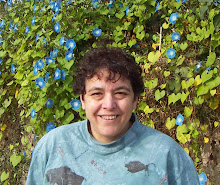The residential part of the island is about 6 streets wide and maybe a mile long and it took us over an hour and a half to drive and enjoy the lighting displays. This neighborhood definitely feels more is better.

Nascar Santa and Motorcyle Santa were our favorites! It takes quite an imagination to develop Christmas decor to appeal to some buyers!


Lit signs and illuminated gifts were at a few houses.



This house won the "most" prize in our judgement. Even the 2nd floor deck on the back of the house was well decorated with blue lights.

I liked this Santa, a simple flat display, well lit with the shadow on the house. In the window you can just note a colorful Santa face.

One of the apartments had some reindeer and a projected image of Frosty right by the clotheslines.
 Small houses were among the ones most covered.
Small houses were among the ones most covered.
This one is a Light Bright winner with two Frosty the Snowmen in the attic windows.
I call this one dueling duplex. One side was into decorating and the other ran one strand of lights on the porch and had window lamps.
One of many well decorated....or decorated well...you judge.

These two are not traditional. One was actually out of focus but I think it makes a great artsy shot. The other, the Christmas goose, was not lit at all, but caught my eye as we drove by and deserved attention.





















 The music was used to attract people to a demonstration. There was a gathering of nursing students with signs in the street in front of Invalides. They were protesting that their classes had been cancelled so they could help at the clinic to give H1N1 innoculations. We could not understand just what they were protesting.....the lack of classes, the fear of exposure to H1N1, or the fact that it was a nice sunny afternoon and they needed to be inside? We decided to move on into the museum when the police started to arrive.
The music was used to attract people to a demonstration. There was a gathering of nursing students with signs in the street in front of Invalides. They were protesting that their classes had been cancelled so they could help at the clinic to give H1N1 innoculations. We could not understand just what they were protesting.....the lack of classes, the fear of exposure to H1N1, or the fact that it was a nice sunny afternoon and they needed to be inside? We decided to move on into the museum when the police started to arrive. 



































